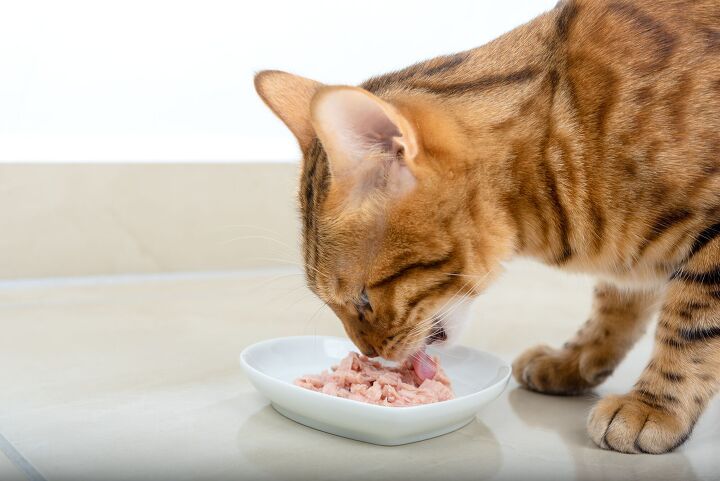Scientists Finally Know Why Cats Love Tuna So Much

No food is more synonymous with cats than tuna. Even the pickiest of cats can’t resist the tuna’s fishy flavor. Finally, scientists have learned why cats love tuna so much.
In the study published in the journal Chemical Sense, scientists report that cats, like humans, have receptors needed to detect umami flavor. Along with sweet, sour, bitter, and salty, umami is one of the five basic tastes.
Umami seems to be the cats’ favorite flavor. Considering that umami gives food a deep and savory meaty aroma, it’s no surprise that an obligate carnivore like a cat would prefer it over all other flavors.
The research team also found that cats’ taste receptors bind to two chemicals found in high concentrations in tuna. These chemicals boost the umami flavor, making cats obsessed with tuna.
“This is an important study that will help us better understand the preferences of our familiar pers,” says Yasuka Toda, a molecular biologist at Meiji University. According to Toda, this study could help cat food manufacturers create healthier food and more palatable medication for cats.
Previous studies showed that cats have a unique palate. Cats can’t taste sugar, because their sweet receptor gene is dysfunctional. Scientists believe that felines lose the ability to taste sweeteners and carbs because they don’t need these macronutrients to survive.
Cats also have fewer bitter flavor receptors than humans. This trait is commonly seen in obligated carnivores.
“Since discovering that cats don’t have a functional sweet taste receptor, we did wonder what they would respond to instead,” study lead author Scott McGrane, a sensory science expert at Waltham Petcare Science Institute, told Live Science.
Humans and other animals possess two genes - Tas1r1 and Tas1r3 that work together to detect umami flavor. Previous research has shown that cats express the umami-related Tas1r3 gene in their taste buds, but it was unclear whether they possess both genes needed to detect umami flavor.
The research team led by McGrane discovered that cats expressed both Tas1r1 and Tas1r3 genes in their taste buds. To learn this, the scientist biopsied the tongue of a six-year-old male cat that had been euthanized for health reasons unrelated to this study.
However, a closer look at the protein sequences encoded by these genes showed that they are very different from human genes. As it turned out, the main amino acids that activate umami flavor in people - glutamic and aspartic acid - were mutated in cats. “So I began thinking, maybe cats can’t taste umami,” said McGrane.
But, as it turned out, amino acids don’t bind to the cat umami receptor alone. Nucleotides, which are common in meat and yeast, bind to the cat receptor and glutamic and aspartic acid then have an enhancing effect. “That’s the exact opposite of what we see in people,” explained McGrane.
Cats love tuna because it contains the nucleotide inosine monophosphate. Tuna also contains large quantities of L-histidine, an essential amino acid for cats, that enhances umami flavor.
“The L-histidine content of tuna is much higher than of other fish species and meat sources.”
These new findings could be used for the development of tastier cat food and pharmaceuticals. Although cat food manufacturers already knew that cats prefer meaty flavors, they now have much more details about the compounds they can start working with.
It’s essential for manufacturers to ensure that animals want to eat the food they formulate and find it appealing.
“I think umami is as important for cats as sweet is for humans,” said Toda. Dogs, she explained, can taste both sweet and umami, which may explain why they’re not such fussy eaters.
Join the PetGuide community. Get the latest pet news and product recommendations by subscribing to our newsletter here.

Nevena is a freelance writer and a proud mom of Teo, a 17-year-old poodle, and Bob, a rescued grey tabby cat. Since childhood, she had a habit of picking up strays and bringing them home (luckily, her parents didn't know how to say NO). When she's not writing for her fellow pet parents, Nevena can be found watching Teo sleep. To her defense, that's not as creepy as it sounds!
More by Nevena Nacic






















